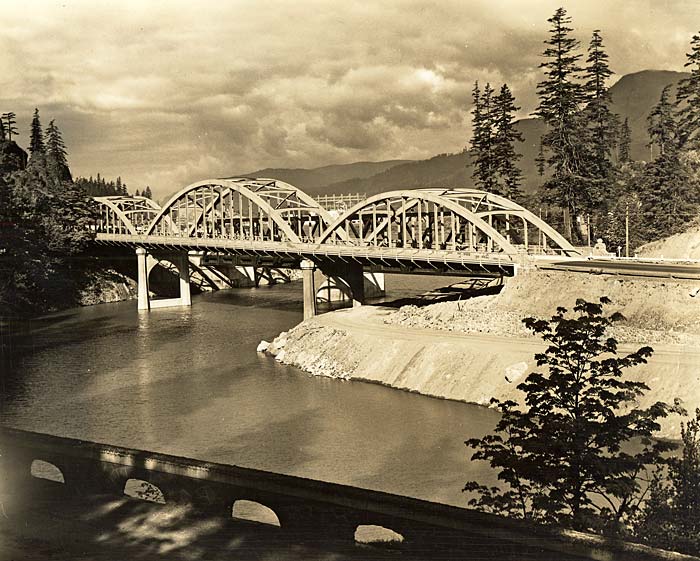 Oneonta bluff and tunnel (553).
Oneonta bluff and tunnel (553).
This web tour is based on the publication, Oregon: End of the Trail, written and compiled by the Writers' Program of the Works Projects Administration (WPA) in Oregon. The WPA, established as part of the New Deal during Franklin D. Roosevelt's presidency, employed many of the nation's writers and intellectuals to record the history of the country.
The Writers' Program used the talents of mostly Oregon-based academics to publish Oregon: End of the Trail in 1940. The work includes comprehensive accounts of Oregon's history, culture, and attractions. "A 1940 Journey Across Oregon" represents just one tour found in the WPA volume. The images used to supplement the tour are mostly from the Oregon Highway Department tourism photo collection at the Oregon State Archives.
Oregon: End of the Trail was written when Oregon seemed to be rapidly changing. Its contributors feared the imminent disappearance of the small-town, rural life which had characterized Oregon. They knew rapid industrialization was sure to follow the construction of Bonneville Dam, which already marred the beauty of the Columbia Gorge. The writers were also apprehensive about the construction of highways contributing to increasing urbanization. Perhaps the most obvious change, however, was a demographic one caused in part by the immigration of dust-bowl refugees.
 Eagle Creek Bridge (824).
Eagle Creek Bridge (824).
While cherishing the beauty of the state, WPA State Supervisor T. J. Edmonds asked about Oregon's future:
"The sons and daughters of Oregon today are tall and sturdy, and the complexion of the daughters is faintly like that of the native rose - a hue gained from living and playing in the pleasant outdoors. Will the sons of the impending industrial age be shorter and shrewder, and the daughters dependent for their beauty upon commodities sold in drug-stores; and will Oregonians become less appreciative of nature and rooted living and more avid and neurotic in the pursuit of wealth?"
In the wake of such questions and misgivings, Oregon: End of the Trail
was a welcome chance for many Oregon writers not only to exercise their talents, but celebrate their land. Edmonds hailed the work:
We hope you enjoy "A 1940 Journey Across Oregon."